It's a Long Story
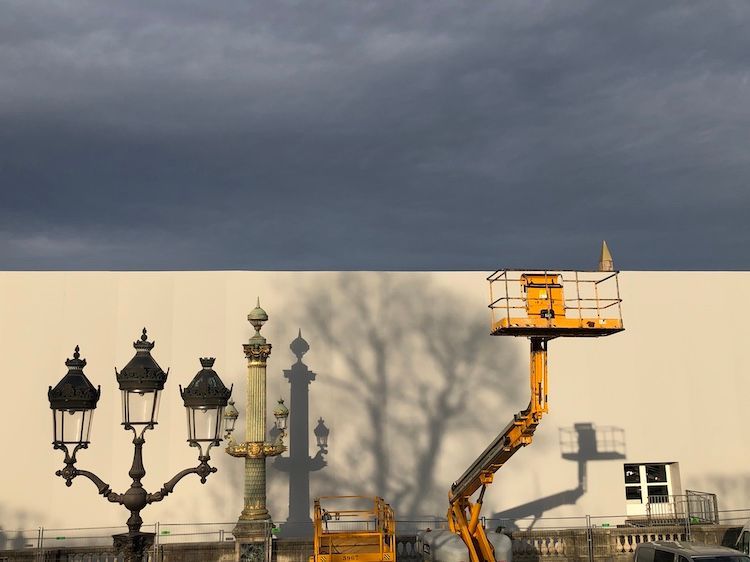
Friday, 16 September
Trick question: what is the oldest monument in Paris?
People who don't know the city well might answer Notre Dame (1163-1345), but Our Lady isn't even the oldest church, with Saint-Germain-des-Près preceding it by a few hundred years (founded in 558 by Childebert I, rebuilt at the end of the 10th century and remodelled multiple times since).
Others who know the city a bit better might think of Roman remnants in the 5th arrondissement such as the Cluny thermal baths (1st century) or the Arènes de Lutèce amphitheatre (2nd century).
They’d all be wrong by several millennia. The oldest monument in Paris is the Luxor Obelisk on the place de la Concorde, the gold tip of which you can just see, top right, in the above photo. Of course the 1290 BCE granite column wasn't actually built in the city, just transported here in 1829 when the vice-pasha of Egypt offered it to France after Jean-François Champollion cracked the code of hieroglyphics.
An odd fact about an odd relic on an odd piece of Paris property.
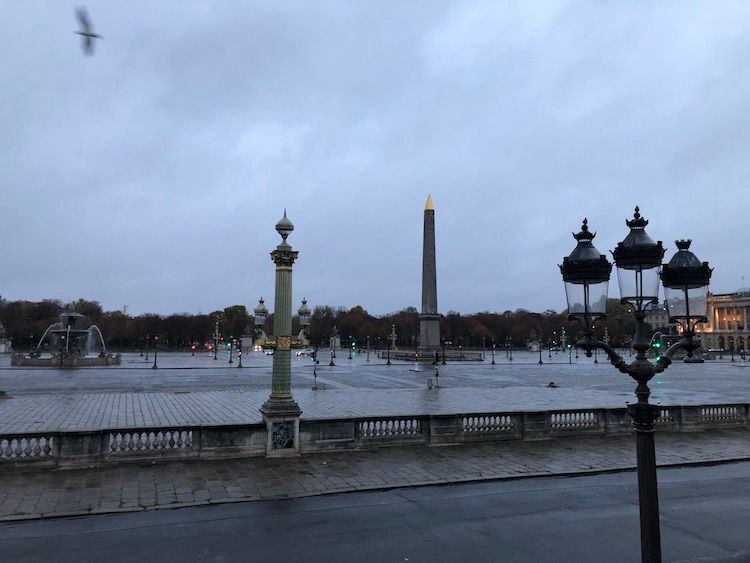
The place, right across the Seine from our apartment, is a daily feature of my life. The terraces of the Tuileries, where I walk Tasha every morning, overlook it.

Trips to the Right Bank often require cycling across it, a perilous exercise given that nervy Parisian drivers become particularly aggressive on its un-demarcated cobbled vastness. A few years ago a bike path was designated around the side, so now you can choose your poison.

Last Sunday morning, in my attempt to wear down The Indefatigable One (aka Tasha), I was riding my bike with the dog across a blissfully calm place, on our way from the Tuileries to the Jardins des Champs Elysées. It struck me that there’s a lot of empty grey matter for a quartier of Paris where apartments sell for 18,000€ a square metre ($8000 a square foot). The 8ha/20 acre plot may be a classified historical monument with, besides the obelisk, two fountains, statued sentinel towers representing the eight largest cities of France (after Paris) and lots of fancy street lamps, but it is essentially a roundabout surrounded by inhospitable swathes of bare stone.
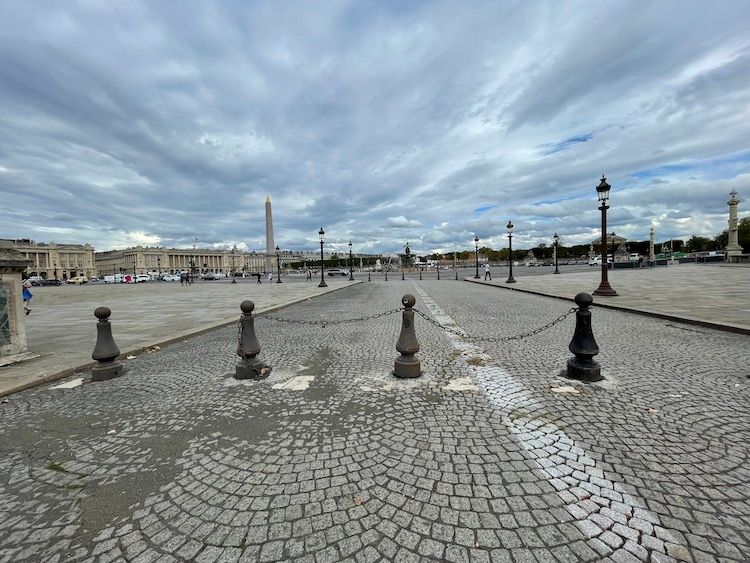
Yes, crowds form for parades and the arrival of the Tour de France. Nicolas Sarkozy delivered his presidential victory speech there in 2007. Fashion shows and trade fairs erect big tents next to the Tuileries entrance that block the view (top photo again). Protestors gather to demonstrate.
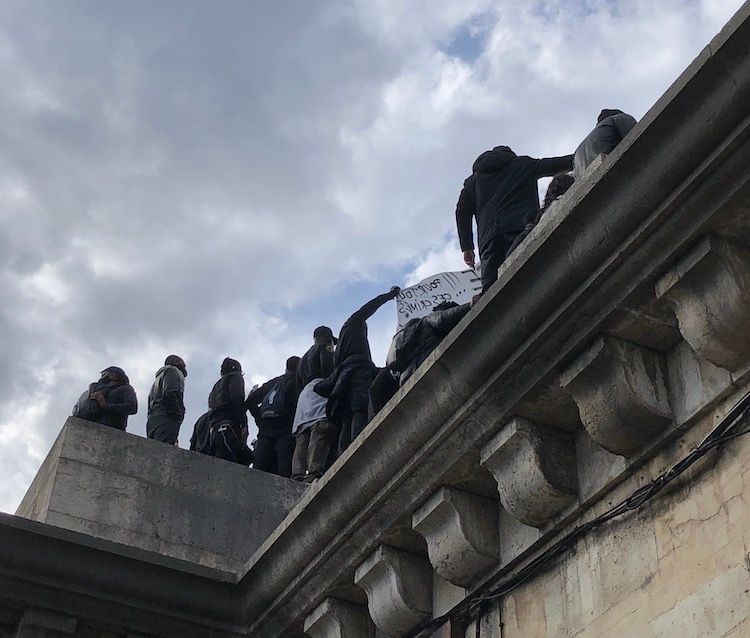
But most of the time, it's not a fun place to hang out; there isn't even anywhere to sit.
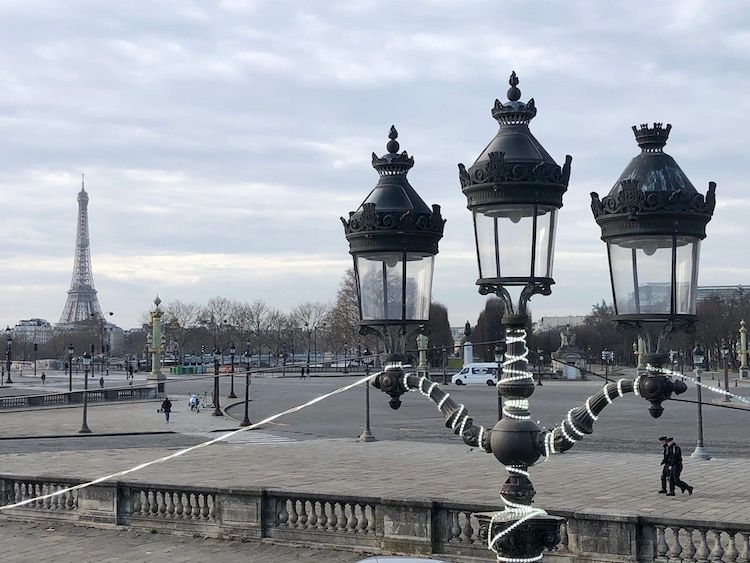
In our climately challenged world, I wondered as I bumped over stone after stone, wouldn’t it be better to replace some of the mineral expanse with greenery? To return to its 1772 roots, so to speak, when flower beds spread underneath the balustrades? You could forgo the equestrian statue of King Louis XV, after whom the place was originally named, and the monarchy.
Like the country did twenty years later. In 1792, the square was renamed place de la Révolution and the following year hosted King Louis XVI and his wife Marie-Antoinette when they lost their heads. A year after that, it was the other side, the Reign of Terror leaders - Robespierre and Danton, for example - who were getting the chop. In the space of three years, 1119 people were guillotined right here:

Once the blood letting stopped in 1795, it was dubbed place de la Concorde as a sign of reconciliation. Until the restoration of the monarchy, at least, when the name was back to Louis XV, then Louis XVI. It got reattributed Concorde following the July Revolution of 1830. Vive stable governance.
During World War II, the German occupiers went around it in their tanks and later, during the Liberation, took potshots at Parisiens daring to celebrate.
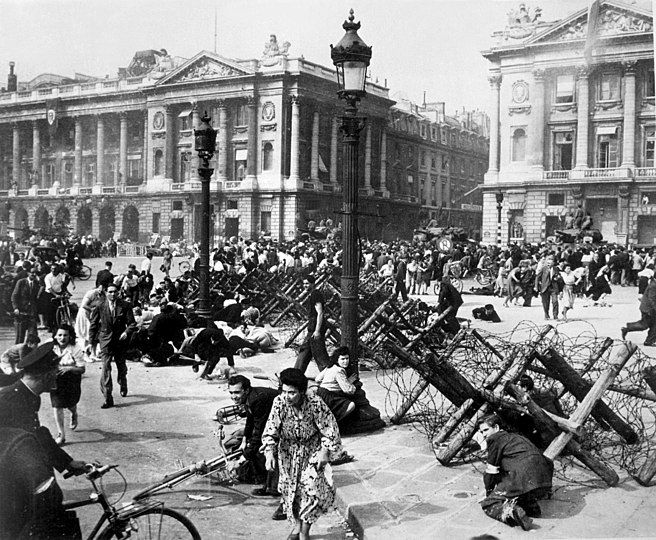
With such a fraught history, why would you even want all that empty space where huge crowds can amass?
My weekend mental meanderings got at least a partial answer on Wednesday.
The whole square, it was announced, will soon receive a 700,000 - 900,000€ facelift. The obelisk, owned by the state rather the municipality, already got a scrub earlier this year...
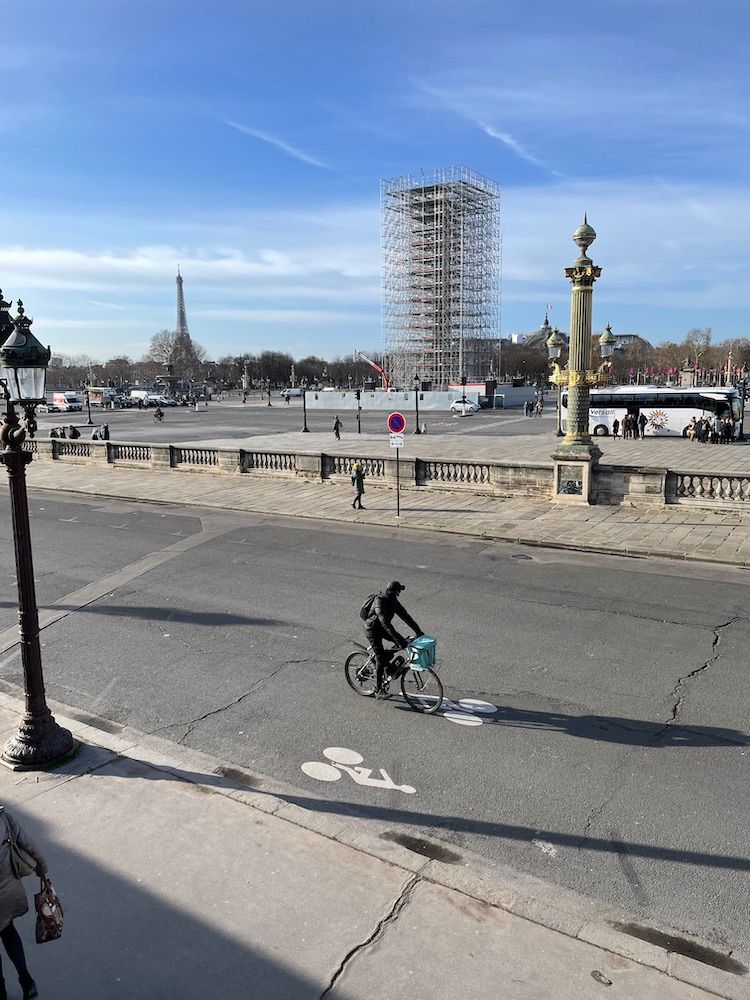
...and now, following more hectoring from the #SaccageParis movement, once again with the support of culture guru Stéphane Bern, the place will follow suit.
She is, as Monsieur Bern intoned, "in a pitiful state". The blemished statuary, for example...

...or the fountains, which have been afflicted by Paris' hard water...

Of course the real reason the Mairie de Paris is reacting so promptly to #SaccageParis complaints is that the 2024 Olympics are right around the corner. Given that the whole city is under siege by pre-game construction, it's astonishing the urban authorities needed a nudge.
During the Olympic invasion, the place de la Concorde will, I learned, be transformed into a 30,000 seat arena. The opening ceremony will be hosted here. Planned sporting events include the very 21st century 3 x 3 basketball (I had to look this one up), BMX free style, break-dancing, skateboarding and climbing.
Enough to turn the severed heads of Louis and Robespierre over in their graves, to send the Luxor obelisk pogo-ing back to the banks of the Nile.
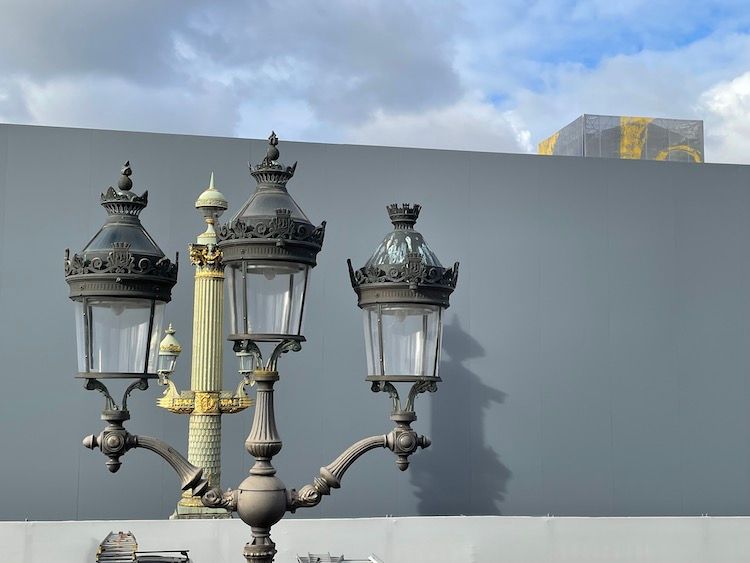
Thus the next chapter in the colourful history of this grey square begins. How does place de la Break-Dance grab you?
___________________